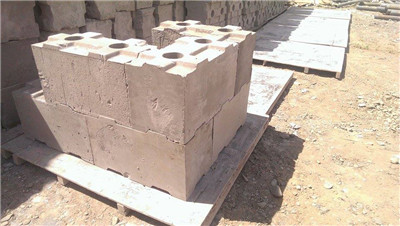How can I make a foam concrete that meets the requirements?
As an experienced manufacturer of foam concrete plants, Gaodetec has developed, produced and sold foam concrete plants for 10 years. Foam concrete does not pollute the natural environment such as soil, water and air. At the same time, foam concrete can be used to fill the construction of the project to avoid damage to the environment, such as high filling and excavation. It is of great significance for the protection of natural ecological environment and has obvious environmental advantages. There are a large number of closed pores inside the foam concrete. Compared with other materials, the air has the best thermal inertia, which greatly reduces the thermal conductivity of the foam concrete. Therefore, in the field of building energy conservation, foam concrete is often used as insulation material.


Foam concrete produced by the foam cement brick factory can be used to make foam concrete bricks, but what is the main material for making foam concrete bricks?
The first is ordinary Portland cement, which can be used for 42.5 or 32.5. If you want to shorten the production cycle of foam cement, it is best to use fast and hard Portland cement or sulphoaluminate cement. The second type is an effective mixture of primary or secondary fly ash, slag powder, etc., which can improve the performance of foam concrete. The third is a blowing agent, which is essential. If it is a fast hard Portland cement or sulphoaluminate cement, it can be used with any type of blowing agent. If it is ordinary Portland cement, it will condense slowly and be easy to defoam, so it is necessary to use a high-grade foaming agent. There is also a slurry stabilizer that improves stability.
The above are the main raw materials for foam concrete bricks. The correct method of use must be mastered in the foam concrete production process so that the quality of the foamed concrete produced is good.

Basic technical requirements for foam concrete
The foam cement brick machine factory has certain requirements for foam in the production of foam concrete, because the density of the foam also has a certain influence on the foam concrete.
The first one is that the higher the stability of the foam, the better, and the longer the foaming time, the better, so that the mechanical strength can be maintained for a long time. The second is that the more uniform the bubble, the better the bubble diameter. The uniformity here refers to a uniform distribution, and the second refers to the uniform size of the foam. The third is that the smaller the diameter of the bubble, the better, it should be 0.1 to 1 mm, because the smaller the diameter of the bubble, the greater the strength of the concrete. The fourth is that the lower the bubble bleed rate, the better. Finally, it should be noted that the foam does not have a negative impact on the cementitious material prior to use.
Although foam concrete requires a certain amount of foam, it is not a foam that can be used, but we must ensure good performance of the foam concrete.
